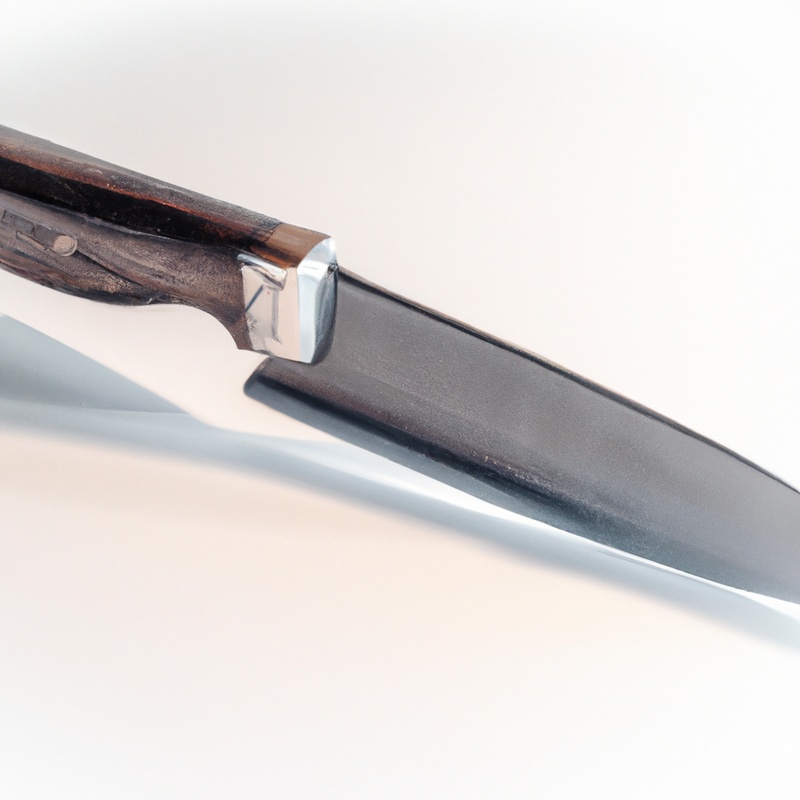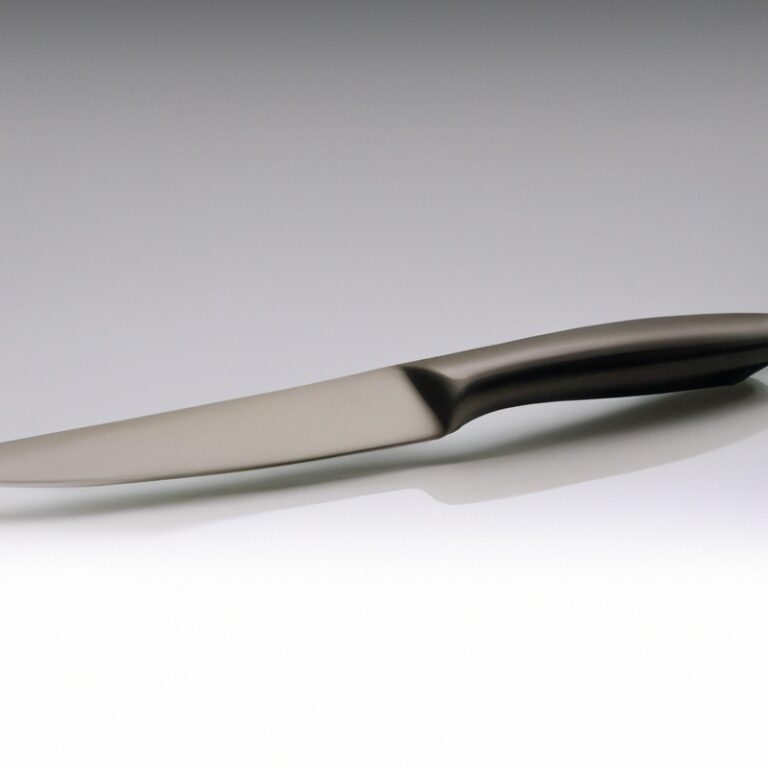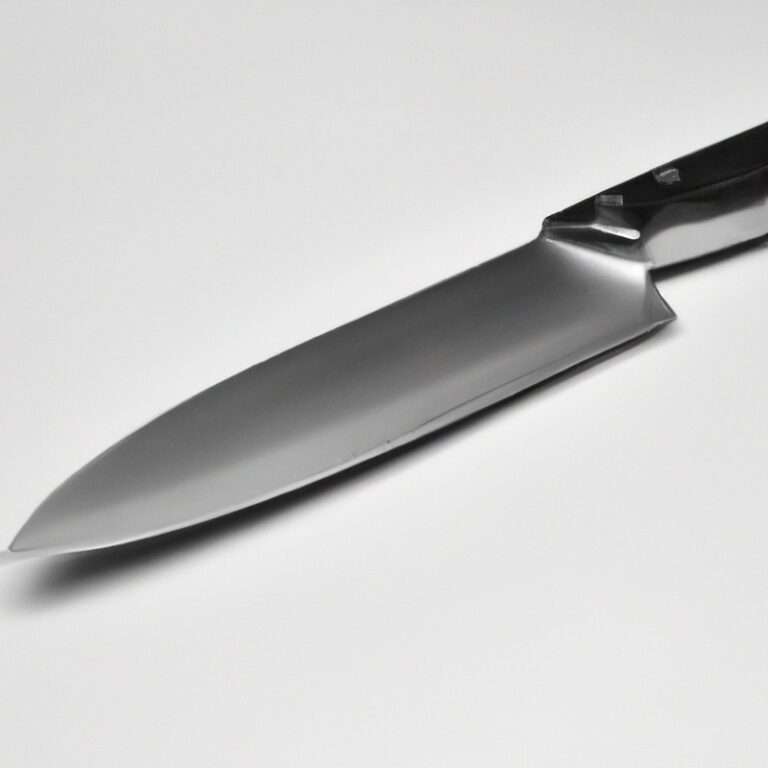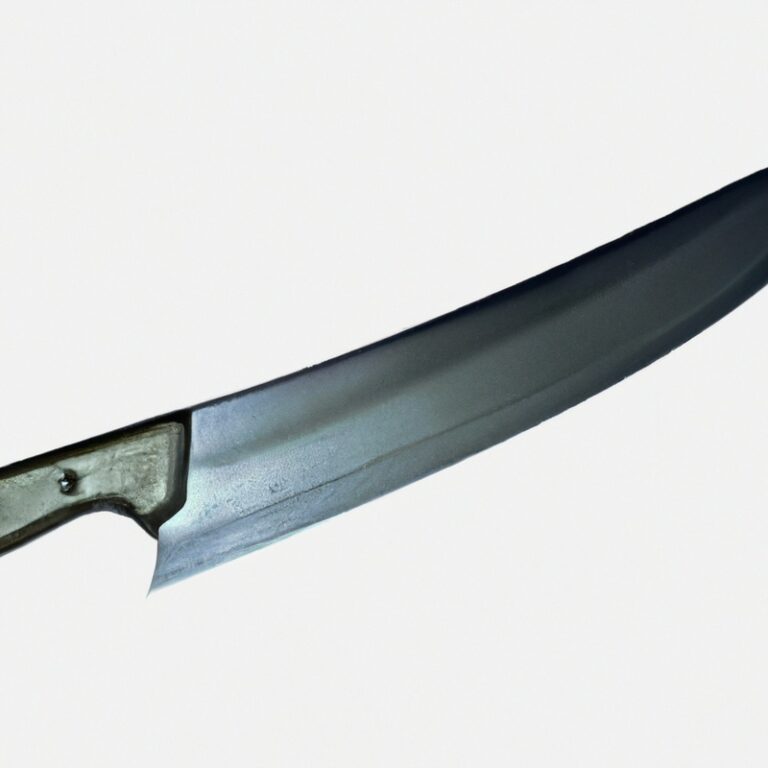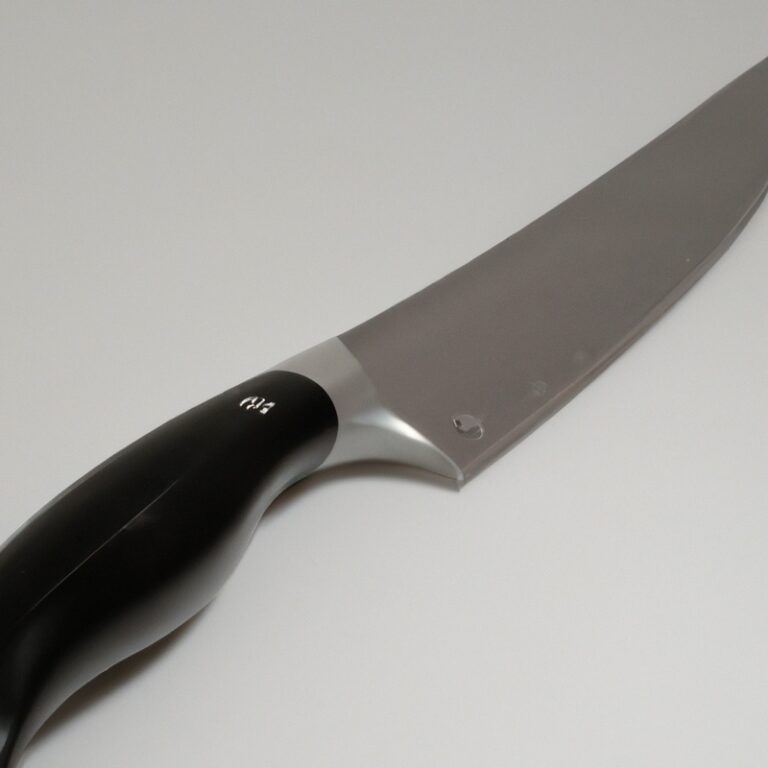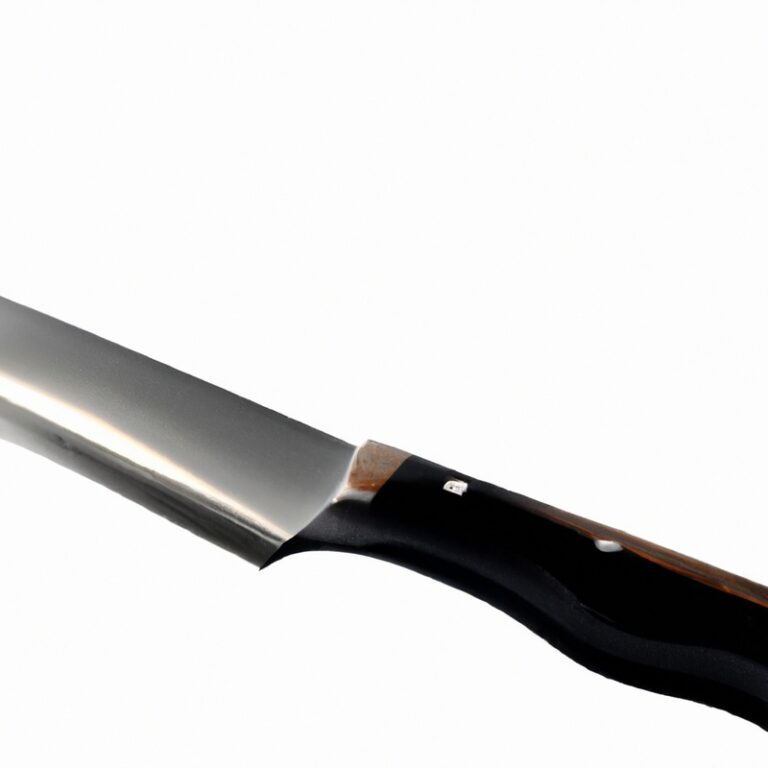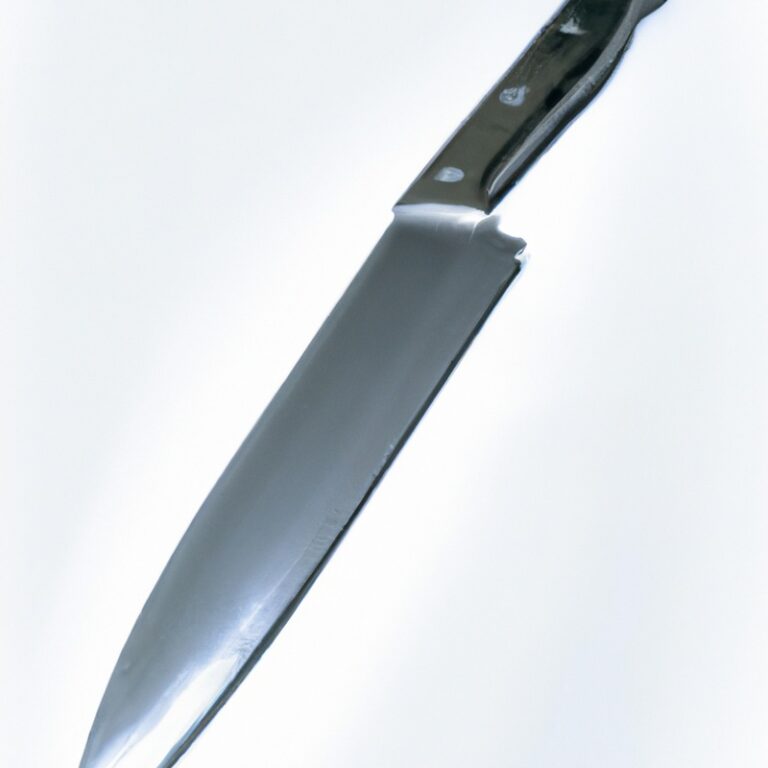Which Knife Steel Is Most Suitable For Outdoor Use?
Key Takeaways:
- Stainless steel is the most suitable knife steel for outdoor use due to its corrosion resistance.
- High carbon steel is ideal for outdoor use if you prioritize edge retention and ease of sharpening.
- Damascus steel is not the most practical option for outdoor use due to its higher maintenance requirements.
- Consider factors such as blade hardness, toughness, and blade geometry when choosing a knife steel for outdoor activities.
Are you an outdoor enthusiast who loves venturing into the wilderness? One essential tool you simply can’t afford to overlook is a reliable knife.
But with the plethora of choices available, how do you know which knife steel is the best for outdoor use?
That’s where I come in. As an expert in the field, I’m here to guide you through the labyrinth of options and help you make an informed decision.
In this article, I’ll be discussing different types of knife steels, factors to consider when choosing one, and the top picks for specific outdoor activities.
Get ready to find the perfect steel companion for your wilderness adventures!
| Knife Steel | Advantages | Disadvantages |
|---|---|---|
| Carbon Steel | Sharpens easily | Prone to rust and corrosion |
| Stainless Steel | Resistant to rust and corrosion | Difficult to sharpen |
| D2 Steel | Excellent edge retention | Requires regular maintenance |
| S30V Steel | High corrosion resistance | Can be challenging to sharpen |
| VG10 Steel | Good edge retention | May chip under heavy use |
Common Knife Steels for Outdoor Use
Stainless Steel
Stainless steel is a popular choice for outdoor knives due to its excellent corrosion resistance. It is resistant to rust and staining, making it ideal for use in harsh environments.
Stainless steel is also known for its durability and strength, allowing it to withstand heavy use and tough tasks.
Additionally, it is relatively easy to maintain and sharpen. Some common stainless steel options for outdoor knives include 154CM, S30V, and VG-10.
These steels offer a good balance of toughness, edge retention, and corrosion resistance, making them suitable for various outdoor activities.
High Carbon Steel
High Carbon Steel is a popular choice for outdoor knives due to its durability and edge retention.
It contains a higher percentage of carbon, which increases hardness and allows for sharp, long-lasting edges.
This type of steel is known for its strength and ability to withstand heavy use and abuse.
However, it is more prone to corrosion, so proper care and maintenance are essential to prevent rust.
With regular upkeep, a high carbon steel knife can be a reliable and effective tool for outdoor activities.
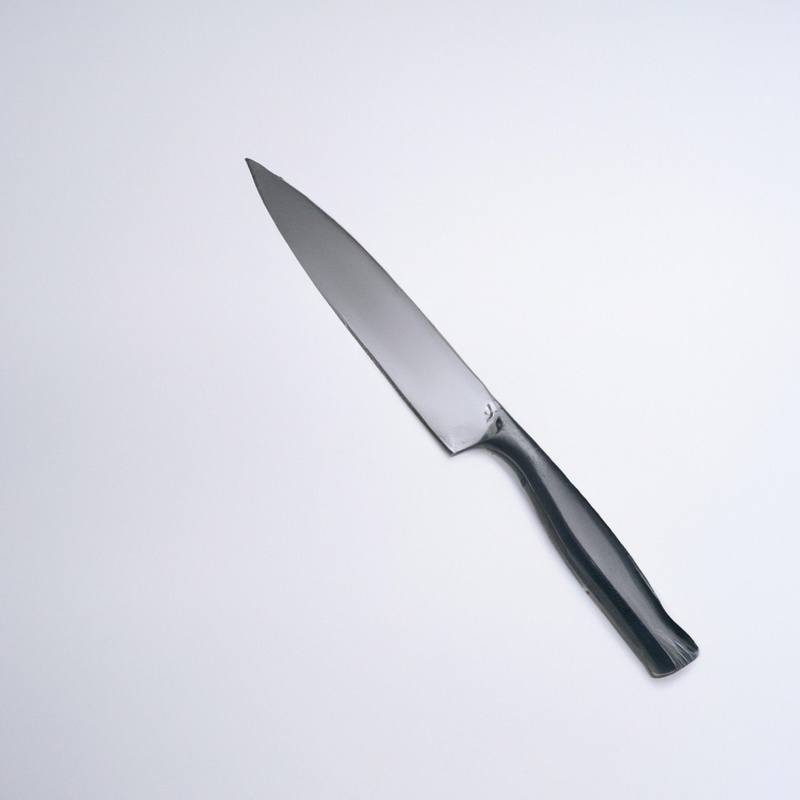
Tool Steel
Tool steel is a popular choice for outdoor knives due to its excellent strength and durability. It is specifically designed to withstand tough conditions, making it ideal for tasks such as chopping wood or processing game.
Tool steel can maintain a sharp edge for extended periods and is relatively easy to sharpen.
It also offers good corrosion resistance. Some common types of tool steel used in outdoor knives include O1 and A2.
These steels are known for their toughness and ability to handle heavy use.
Tool steel is a reliable option for those seeking a rugged and dependable outdoor knife.
Damascus Steel
Damascus steel is a popular choice for outdoor knives due to its unique pattern and excellent performance.
It is a type of steel made by forging and layering different types of steel together.
This process creates a beautiful pattern on the blade and enhances its strength and durability.
Damascus steel knives have a high carbon content, which provides excellent edge retention and sharpness.
They are also known for their toughness and resistance to corrosion.
With proper care and maintenance, a Damascus steel knife can be a reliable companion for outdoor adventures.
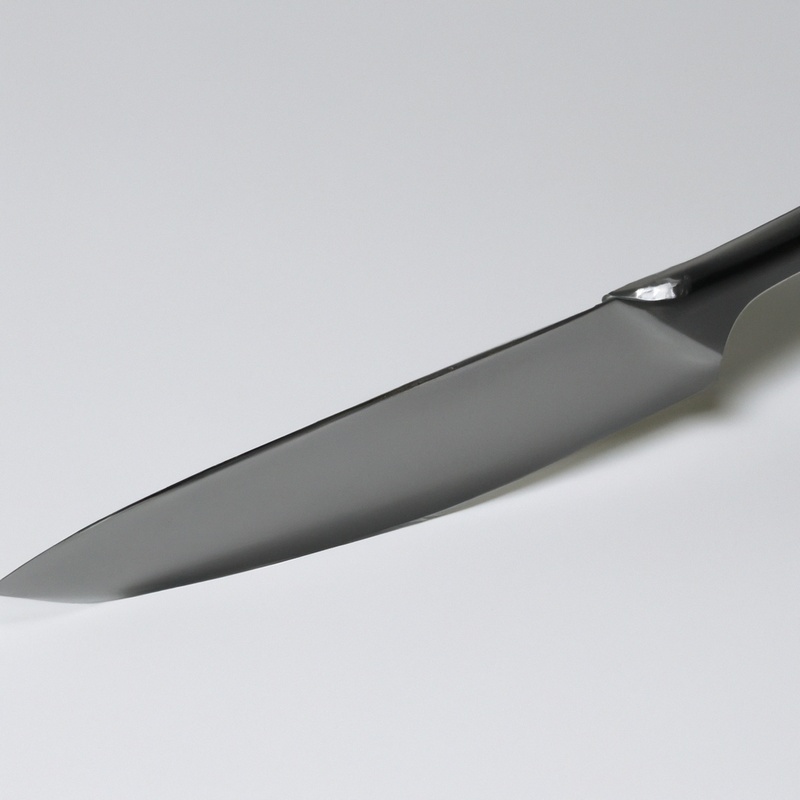
Factors to Consider for Outdoor Knife Steel Selection
Durability and Hardness
Durability and hardness are two key factors to consider when selecting an outdoor knife steel.
Durability refers to how well the steel can withstand wear and tear, while hardness determines how well it can retain its sharpness.
High carbon steels like D2 and 1095 offer excellent durability and hardness, making them suitable for rugged outdoor use.
Stainless steels like VG-10 provide good corrosion resistance and hardness, but may not be as durable as high carbon steels.
Ultimately, the right balance between durability and hardness depends on your specific needs and activities.
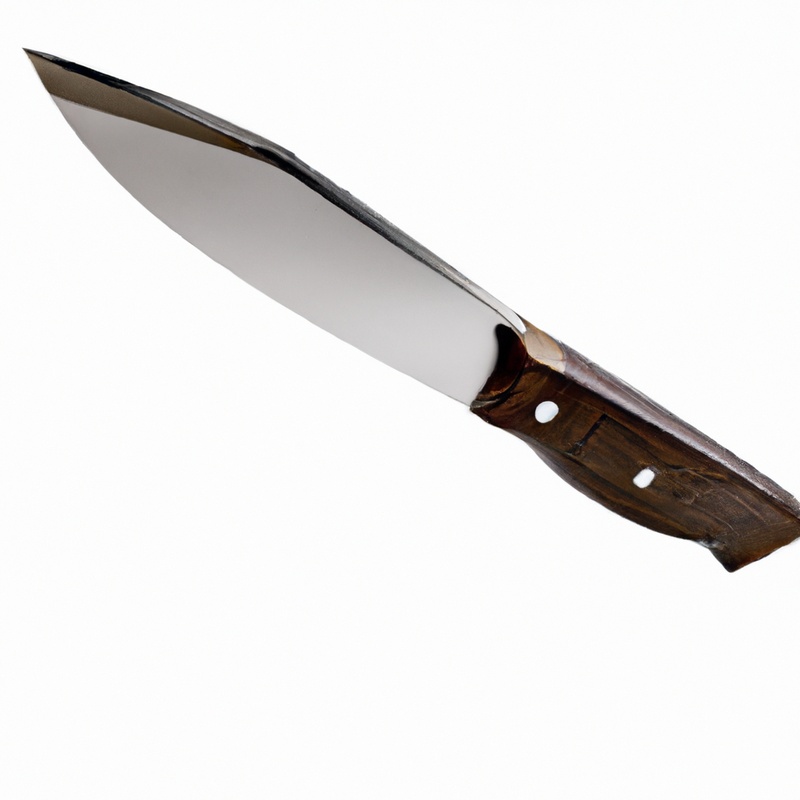
Corrosion Resistance
Corrosion resistance is a key factor to consider when choosing a knife steel for outdoor use. You want a steel that can withstand exposure to moisture, humidity, and other corrosive elements without rusting or deteriorating.
Stainless steel is a popular choice for its excellent corrosion resistance, making it suitable for various outdoor activities.
High carbon steels, on the other hand, may have lower corrosion resistance and require more frequent maintenance. It’s important to prioritize this aspect to ensure your outdoor knife remains functional and reliable in different environmental conditions.
Sharpening and Edge Retention
Sharpening and edge retention are important factors to consider when choosing a knife steel for outdoor use. A steel that is easy to sharpen and holds its edge for a long time is ideal.
Some steels, such as D2 and CPM S30V, are known for their excellent edge retention.
They may be a bit more challenging to sharpen, but the trade-off is worth it for outdoor enthusiasts who need a long-lasting edge. On the other hand, steels like VG-10 stainless steel are easier to sharpen but may not hold their edge as long.
It’s important to find a balance between sharpening ease and edge retention based on your specific needs and skill level.
Toughness and Impact Resistance
Toughness and impact resistance are important factors to consider when choosing a knife steel for outdoor use. You want a blade that can withstand rough handling and heavy use without chipping or breaking.
Some steel types that excel in toughness and impact resistance include:
- D2 Steel: Known for its high hardness and excellent toughness, D2 steel is a popular choice for outdoor knives that need to withstand heavy-duty tasks.
- CPM S30V Steel: This stainless steel offers a good balance of toughness, hardness, and corrosion resistance, making it suitable for outdoor use.
- High Carbon Steel: Renowned for its ruggedness and durability, 1095 high carbon steel is commonly used in outdoor and survival knives.
- VG-10 Stainless Steel: This steel offers a good combination of toughness and corrosion resistance, making it a reliable choice for outdoor activities.
Remember to consider your specific needs and preferences when selecting the right knife steel for your outdoor adventures.
Best Knife Steels for Outdoor Use
D2 Steel
D2 Steel is a popular choice for outdoor knives due to its excellent durability and edge retention. It is a high-carbon, tool steel that offers great wear resistance and toughness.
The high chromium content provides good corrosion resistance, although it may require extra care to prevent rust.
D2 Steel can hold a sharp edge for extended periods, making it suitable for heavy-duty tasks. Overall, D2 Steel is a reliable option for outdoor enthusiasts who value longevity and performance in their knives.
CPM S30V Steel
CPM S30V Steel is a high-quality stainless steel often used in outdoor knives.
It offers excellent corrosion resistance and edge retention, making it ideal for outdoor activities.
With its high hardness and toughness, it can withstand demanding tasks without easily chipping or breaking.
One advantage of CPM S30V is that it can be sharpened to a fine edge and maintain its cutting performance for a long time.
Its overall balance of properties makes it a popular choice among outdoor enthusiasts.
1095 High Carbon Steel
1095 High Carbon Steel is a popular choice for outdoor knives. It is known for its durability and ability to hold a sharp edge. This steel is strong and tough, making it ideal for tasks like bushcraft, survival, and hunting. However, 1095 High Carbon Steel is prone to corrosion, so it requires regular maintenance to prevent rust. It is also important to note that this steel is not stainless, meaning it may require more care compared to stainless steel options. Despite this, 1095 High Carbon Steel remains a reliable choice for outdoor enthusiasts seeking a tough and sharp blade.
VG-10 Stainless Steel
VG-10 Stainless Steel is an excellent choice for outdoor knives.
It is known for its high corrosion resistance, making it perfect for use in wet and humid environments.
The steel has a good balance of hardness and toughness, providing excellent edge retention and durability.
Its fine-grained structure allows for sharp and precise cuts.
VG-10 Stainless Steel is also relatively easy to sharpen, making it convenient for outdoor enthusiasts.
Overall, this steel offers great performance and reliability for outdoor use.
Special Considerations for Specific Outdoor Activities
Camping and Hiking
Camping and hiking require a reliable and durable knife that can handle various tasks in outdoor environments. When choosing a knife steel for camping and hiking, there are a few important factors to consider.
Firstly, durability is crucial to withstand the demands of outdoor activities.
You want a steel that can withstand impacts and heavy use without chipping or breaking. Second, corrosion resistance is essential, as your knife may come into contact with moisture and humidity.
Third, a knife with good edge retention is important to minimize the need for frequent sharpening.
Lastly, toughness is crucial to ensure the knife can handle tasks such as cutting through tough materials or batoning wood. By considering these factors, you can choose a knife steel that is suitable for camping and hiking adventures.
Hunting and Skinning
When it comes to hunting and skinning, a knife with the right steel is essential. You want a steel that is tough and durable, as it will be subjected to various tasks in the field.
A high carbon steel, such as 1095, is often a popular choice for hunting and skinning knives.
It has excellent edge retention and is easy to sharpen. Other options to consider are D2 steel and CPM S30V steel, known for their excellent wear resistance and ability to hold an edge.
Just prioritize finding a steel that meets your specific needs for hunting and skinning.
Bushcraft and Survival
Bushcraft and Survival require a knife steel that can handle tough tasks and extreme conditions.
The ideal knife steel for these activities should have excellent durability, hardness, and toughness.
It should also be corrosion-resistant and have good edge retention.
Some popular knife steels for Bushcraft and Survival include D2 steel, CPM S30V steel, 1095 high carbon steel, and VG-10 stainless steel.
These steels provide the necessary reliability and performance needed for outdoor adventures.
Regular maintenance, such as cleaning, drying, and sharpening, will help extend the lifespan of your knife steel in these activities.”
Maintenance and Care Tips for Outdoor Knife Steels
Cleaning and Drying
Cleaning and drying your outdoor knife is essential to maintain its performance and prevent rust or corrosion. After use, I recommend wiping down the blade with a clean cloth or paper towel to remove any dirt, moisture, or debris.
Use warm water and mild dish soap for stubborn stains or grime.
Avoid abrasive cleaners or steel wool, as they can damage the blade. Once cleaned, make sure to thoroughly dry the knife with a towel, paying special attention to the crevices and pivot points.
This will prevent moisture from lingering and causing rust.
A quick spray of lubricating oil on the blade and pivot areas can also help protect against corrosion. Regular cleaning and drying will prolong the life of your outdoor knife and ensure optimal performance.
Lubrication and Rust Prevention
To prevent rust and keep your outdoor knife steel in top condition, proper lubrication is essential. Apply a thin layer of oil or silicone-based lubricant to the blade after each use and before storage.
This helps create a barrier against moisture and oxidation.
Make sure to cover the entire surface, including the handle and pivot points. Regular maintenance is key, especially when exposed to harsh environments or saltwater.
By regularly lubricating your outdoor knife, you can significantly extend its lifespan and performance.
Sharpening Techniques
When it comes to sharpening your outdoor knife, there are a few techniques you can use to maintain a sharp and effective edge. One method is to use a sharpening stone, which can be either a whetstone or a diamond stone.
Simply hold the knife at a consistent angle and swipe it back and forth across the stone, alternating sides.
Another option is to use a sharpening rod or honing steel. Hold the knife at a slight angle against the rod and slide it down the length of the blade.
Remember to apply light pressure and take your time to ensure a quality sharpening.
Final Verdict
Selecting the right knife steel for outdoor use is crucial for ensuring durability, corrosion resistance, sharpness, and toughness. Stainless steel, high carbon steel, tool steel, and Damascus steel are common choices.
Factors to consider include hardness, corrosion resistance, edge retention, and impact resistance.
Based on these factors, some of the best knife steels for outdoor use are D2 steel, CPM S30V steel, 1095 high carbon steel, and VG-10 stainless steel. It is important to consider the specific requirements of outdoor activities such as camping, hunting, and bushcraft.
Regular maintenance and care, including cleaning, drying, lubrication, and proper sharpening techniques, will help maintain the performance and lifespan of the knife steel.

